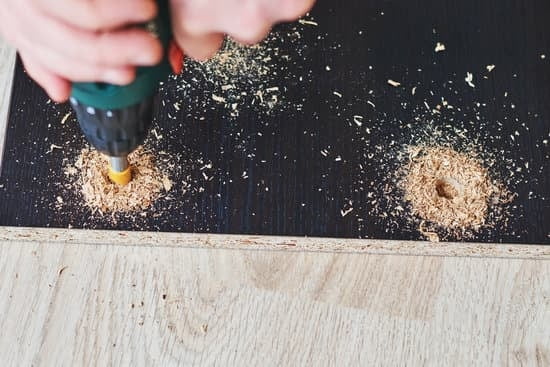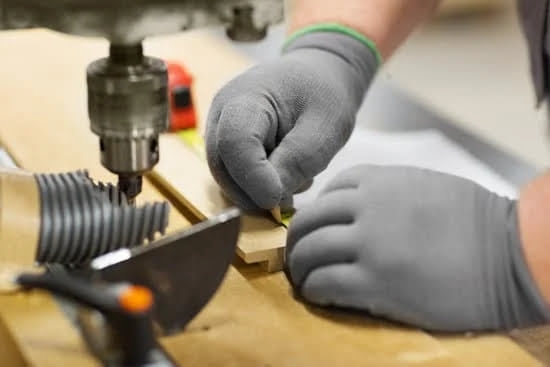When it comes to woodworking, having the right tools is essential for achieving quality results. Among the array of tools needed, saws play a crucial role in shaping and cutting wood effectively.
In this article, we will delve into the world of woodworking saws and explore the must-have options for every woodworker’s toolkit. Whether you are a beginner looking to start your woodworking journey or a seasoned professional seeking to upgrade your equipment, understanding the different types of saws available and their specific uses is key.
Woodworking projects require precision and accuracy, which can only be achieved with the proper selection of saws. From circular saws to jigsaws and miter saws, each type serves a unique purpose in shaping, cutting, and joining wood pieces together. However, not all saws are created equal, and knowing which ones are essential for your projects can make a significant difference in the outcome.
In this guide, we will highlight the must-have saws that every woodworker should have in their arsenal. From versatile table saws to specialized bandsaws and versatile reciprocating saws, these tools are designed to make woodworking tasks more manageable and efficient.
By understanding the features to look for when selecting saws for woodworking projects, you can ensure that you are equipped with the right tools for the job ahead. So let’s explore the world of woodworking saws and discover how choosing the right ones can elevate your craftsmanship to new heights.
Types of Saws
When it comes to woodworking, having the right tools is essential to ensure successful and efficient projects. One of the key components of any woodworker’s toolkit is a variety of saws. There are several types of saws commonly used in woodworking, each serving a specific purpose and offering unique benefits. Among the must-have saws for woodworking are circular saws, jigsaws, and miter saws.
Circular saws are versatile tools that can make straight cuts quickly and accurately. They are ideal for cutting large pieces of lumber or sheet goods like plywood. Circular saws come in both corded and cordless versions, offering flexibility based on your workspace and needs.
Jigsaws, on the other hand, are perfect for intricate cuts and curves. Their thin blades allow woodworkers to create detailed designs or patterns with precision. Additionally, jigsaws can be used on various materials besides wood, making them a versatile addition to any workshop.
Miter saws are essential for making angled cuts with precision and consistency. These saws are great for creating clean corners or joints in woodworking projects like frames or trim work.
Miter saws come in different variations such as compound miter saws or sliding compound miter saws, each offering varying degrees of versatility and cutting capacity. Ultimately, having these must-have saws for woodworking in your collection will significantly enhance your capabilities as a woodworker and allow you to tackle a wide range of projects with ease.
| Saw Type | Key Features |
|---|---|
| Circular Saw | Versatile tool for straight cuts on large pieces of lumber or sheet goods. |
| Jigsaw | Ideal for intricate cuts and curves; thin blades allow for detailed designs. |
| Miter Saw | Precision angled cuts; perfect for clean corners or joints in woodworking projects. |
Must-Have Saws
Woodworking requires specific tools for different tasks, and having the right saws is essential for achieving precision and efficiency in woodworking projects. There are several must-have saws for woodworking that every woodworker should consider adding to their toolkit. These essential saws include a table saw, bandsaw, and reciprocating saw. Each of these saws serves a unique purpose and can greatly enhance the quality of your work.
A table saw is a staple in any woodworking shop due to its versatility and ability to make precise cuts with ease. Whether you need to rip large sheets of plywood or make intricate crosscuts, a table saw is a reliable tool that can handle various tasks.
Additionally, a bandsaw is ideal for cutting curves, resawing lumber, and creating detailed designs. Its slender blade allows for intricate cuts that other saws may struggle with, making it an indispensable tool for many woodworking projects.
On the other hand, a reciprocating saw offers flexibility and power when dealing with rough cuts or demolition work. With its back-and-forth motion, this saw can tackle tough materials like metal or plastic with ease. Having these three must-have saws in your arsenal will ensure that you are well-equipped to tackle a wide range of woodworking projects effectively and efficiently.
| Saw Type | Main Purpose |
|---|---|
| Table Saw | Precision cuts, rip large sheets of plywood |
| Bandsaw | Cutting curves, resawing lumber, intricate designs |
| Reciprocating Saw | Rough cuts, demolitions, tough materials like metal or plastic |
Features to Look For
When selecting saws for woodworking projects, it is crucial to consider various features to ensure that you have the right tools for the job. From power capabilities to blade types and safety features, each aspect plays a significant role in the efficiency and effectiveness of your work. Here are some key features to look for when choosing saws for your woodworking needs:
- Power: One of the most important factors to consider when selecting a saw is its power capacity. The power of the saw will determine how well it can cut through different types of wood and the speed at which it can complete tasks. Make sure to choose a saw with enough power to handle your project requirements.
- Blade Type: Different saws come with various blade types, each suited for specific cutting tasks. For example, a rip-cut blade is ideal for cutting along the grain, while a crosscut blade is better for cutting across the grain. Consider the type of cuts you will be making frequently and choose a saw with compatible blades.
- Safety Features: Safety should always be a top priority when working with saws for woodworking. Look for saws with essential safety features such as blade guards, riving knives, and anti-kickback mechanisms to minimize the risk of accidents. Additionally, make sure to wear proper protective gear like goggles and gloves when using any type of saw.
Considering these important features when selecting saws for woodworking projects will not only enhance your workmanship but also ensure a safer and more efficient working environment in your workshop. By prioritizing power, blade type, and safety features in your decision-making process, you can invest in quality tools that will help you achieve precise cuts and professional results in your woodworking endeavors.
Budget-Friendly Options
Woodworking can be an expensive hobby or profession, with tools often costing a significant amount. However, there are budget-friendly options available for beginners or hobbyists who are just starting in the craft. When looking to build up your collection of saws for woodworking without breaking the bank, there are several affordable options that still offer quality results.
Handheld Circular Saw
One of the must-have saws for woodworking enthusiasts on a budget is a handheld circular saw. These versatile tools are great for making straight cuts and can handle a variety of materials, such as wood, plywood, and even metal. They are lightweight and easy to maneuver, making them ideal for beginners tackling DIY projects or smaller woodworking tasks.
Compact Table Saw
Another cost-effective option is a compact table saw, which provides more stability and accuracy compared to handheld circular saws. While they may have smaller cutting capacities, they are perfect for hobbyists working on smaller projects in limited workspace. Look for features like adjustable fences and easy blade adjustments when selecting a budget-friendly table saw for your woodworking needs.
Cordless Jigsaw
For added versatility in cutting curved lines or intricate patterns, a cordless jigsaw is an excellent addition to any budget-conscious woodworker’s toolkit. These portable saws are perfect for detail work and can be used on various materials with ease. Consider models with variable speed settings and quick blade change systems for maximum efficiency in your woodworking projects while staying within your budget.
By investing in these affordable yet reliable saw options, beginners and hobbyists can start their woodworking journey without compromising on quality results. Remember to prioritize safety precautions while using these essential tools to avoid accidents and ensure a smooth woodworking experience.
Advanced Saws for Professionals
Woodworking professionals looking to take their craft to the next level must explore advanced saw options that offer cutting-edge features and superior performance. Investing in high-end saws can significantly enhance the precision, efficiency, and overall quality of woodworking projects. Whether you are a seasoned professional or a dedicated hobbyist looking to upgrade your tools, these advanced saws are worth considering for your workshop.
Circular Saw: Precision and Power
One essential high-end saw that professionals should consider is a top-of-the-line circular saw. These powerful tools are perfect for making precise cuts in various types of wood with ease and efficiency.
Look for features like variable speed settings, laser guides for accuracy, and durable carbide-tipped blades that can withstand heavy use. Brands like Festool, Makita, and Bosch are known for producing reliable and high-performance circular saws that can handle even the most demanding woodworking tasks.
Sliding Compound Miter Saw: Versatility and Accuracy
Another must-have for woodworking professionals is a sliding compound miter saw. These advanced saws combine the functionality of a miter saw with sliding capabilities for increased cutting capacity.
The ability to make bevel cuts and angled cuts with precision makes this tool invaluable for custom furniture makers, trim carpenters, and other professionals who demand accuracy in their work. Look for features like dual bevel capability, large cutting capacity, and LED work lights for visibility when selecting a sliding compound miter saw for your workshop.
Bandsaw: Control and Flexibility
For woodworking professionals who require intricate cuts and curved shapes in their projects, a high-quality bandsaw is a must-have tool. Bandsaws offer excellent control over cuts and allow for delicate scrollwork, resawing thick boards, and creating unique designs in wood pieces.
Look for features like blade tension adjustments, dust collection ports, and sturdy construction when choosing a bandsaw for your workshop. Brands like Laguna Tools, Jet, and Rikon are well-regarded in the industry for producing reliable bandsaws that deliver exceptional results.
Maintenance Tips
Woodworking saws are essential tools that require proper maintenance to ensure their longevity and optimal performance. By taking care of your saws, you can not only extend their lifespan but also guarantee the quality of your woodworking projects. Here are some maintenance tips to help you keep your must-have saws for woodworking in top condition:
- Regular Cleaning: One of the simplest yet most important maintenance tasks for woodworking saws is regular cleaning. Sawdust and debris can accumulate on the blades and motor over time, affecting both the performance and safety of the tool. After each use, make sure to clean your saw thoroughly to prevent buildup.
- Blade Sharpening: A dull blade can lead to rough cuts, splintered edges, and overall poor results in your woodworking projects. To maintain sharpness, it is crucial to regularly sharpen or replace the blades of your saws. Invest in a quality sharpening tool or seek professional blade sharpening services if needed.
- Lubrication: Proper lubrication is essential for reducing friction and prolonging the life of moving parts in your saws. Refer to the manufacturer’s instructions for recommendations on lubricating specific components such as bearings, gears, and guide rails. Using appropriate oils or lubricants will help maintain smooth operation.
In addition to these basic maintenance tasks, it is also important to store your saws properly when not in use. Keep them in a dry and clean environment to prevent rust or corrosion.
Furthermore, regularly inspect all parts of your saws for any signs of wear or damage, ensuring timely repairs or replacements when necessary. By following these maintenance tips, you can maximize the performance and lifespan of your must-have saws for woodworking while ensuring safe operation in your workshop.
Safety Precautions
In conclusion, choosing the right saws for woodworking projects is crucial for achieving high-quality results and ensuring efficiency in the workshop. Understanding the different types of saws available, from circular saws to miter saws, can help woodworkers select the most suitable tools for their specific needs. However, when it comes to must-have saws for woodworking, investing in a table saw, bandsaw, and reciprocating saw is essential for versatility and precision in cutting various materials.
When selecting saws for woodworking, it is important to pay attention to key features such as power capabilities, blade type compatibility, and safety features. These factors not only contribute to the performance of the saw but also ensure a safer working environment for woodworkers. For those on a budget, there are affordable options available that still provide quality results, making woodworking accessible to beginners and hobbyists alike.
For more advanced woodworkers looking to elevate their craft, there are high-end saws with advanced features that offer precision and efficiency in their projects. However, no matter the level of experience or type of saw being used, following safety precautions is paramount.
By emphasizing the importance of adhering to safety guidelines and providing tips to reduce the risk of accidents in the workshop, woodworkers can enjoy their craft safely while producing exceptional pieces with their must-have saws for woodworking.
Frequently Asked Questions
What Is the Most Useful Saw to Own?
The most useful saw to own would likely be a versatile tool like a circular saw. Circular saws are able to make straight cuts, bevel cuts, and even rip through different types of materials with ease.
What Is the Best Saw to Cut Wood at Home?
When it comes to cutting wood at home, the best saw would probably be a handsaw or a jigsaw. The handsaw is great for smaller projects and precision cutting, while the jigsaw provides more flexibility for curved cuts and intricate designs.
What Saws Do Carpenters Use?
Carpenters typically use a variety of saws depending on their specific needs. Some common saws used by carpenters include the circular saw for straight cuts, the miter saw for angled cuts, the reciprocating saw for demolition work, and the coping saw for detailed trim work. Each type of saw serves a different purpose in carpentry projects.

Hi everyone! I’m a woodworker and blogger, and this is my woodworking blog. In my blog, I share tips and tricks for woodworkers of all skill levels, as well as project ideas that you can try yourself.





